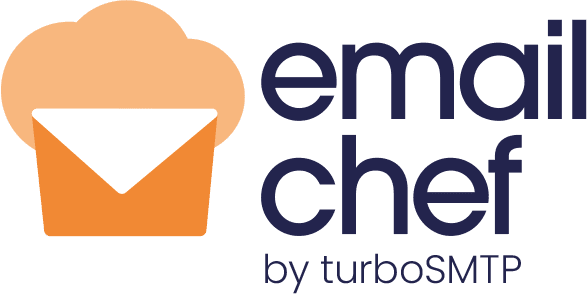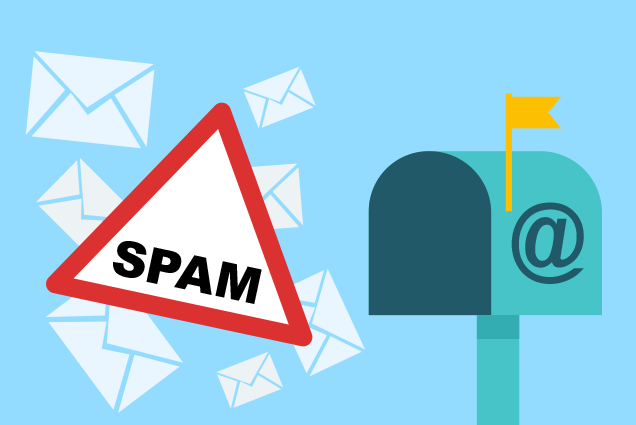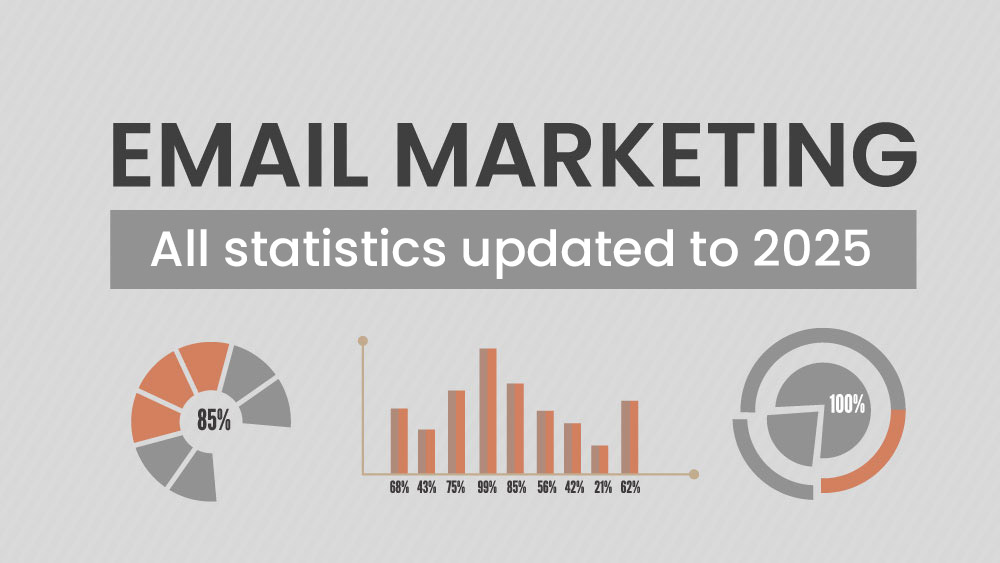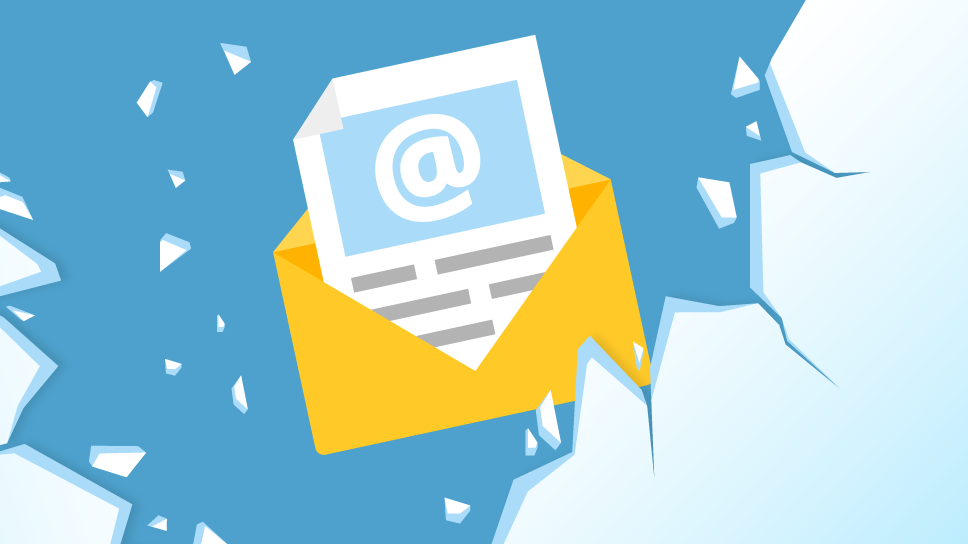Are you looking for something specific but you couldn’t find it? Would you like to suggest a new FAQ? Please write us, we’d be happy to add it!
General questions
What is Emailchef?
Emailchef is a professional email marketing platform that allows you to create, deliver and analyze newsletter campaigns in a breeze.
Does Emailchef provide a free trial?
Sure; you can sign in to the Emailchef dashboard and try it for free.
How will you treat my data?
Your data will never be shared with anyone else and are stored in our highly protected and monitored servers. We value a lot privacy and security, so don’t worry. For further information, please read our terms of use.
How do your account policies work?
Once your account is active, you get automatically an account policy called “Sous-Chef“. As you go on using Emailchef, your policy may be switched to “Head Chef“, and then eventually to the highest rank “Executive Chef“, reserved to the most trusted accounts.
What is spam?
By “spam”, we intend all unsolicited bulk communications sent out to a number of email addresses. All form of spam is strictly prohibited on Emailchef. For further information, please consult our terms of use.
List management
Can I upload my list from a file?
Yes, you can: Emailchef allows to upload directly a list of addresses from a .xls, .csv and .txt file.
What types of list can I import?
You can use Emailchef to send emails only to addresses that have been collected via opt-in methods. That is, getting the recipients’ permission: for instance using a sign-up form on your website (you can build one easily with Emailchef).
Rented and bought lists are never allowed. Any use of this kind of lists will provoke the immediate suspension of your account.
How can I attract new subscribers and grow my list?
Very good question. That’s why we have collected a number of suggestions to help you enlarge your email list with strict opt-in methods. Remember once again that any rented or bought list is absolutely denied on Emailchef.
Can I re-subscribe an contact that I have accidentally unsubscribed?
It depends on your policy. If you have a sous-chef policy, you can’t: with the other two, you can.
Can I add other information to my contacts?
Of course; you can create a number of custom fields that will be made available when it comes to build a a subscription form.
This way you will be able to ask your subscribers (and add to your list) other information, such as their date, gender, hometown, etc.
If I add by mistake a doubled address to a list, what happens?
If you add the same address twice (or more times) to a list, Emailchef will send only one email to it, ignoring the other repetitions.
What is a subscription form?
Adding a subscription or signup form to your website is the best way to let them subscribe to your newsletter. Emailchef provides a handy editor to create a perfect form, of course taking care automatically of all the collected information.
Email creation
Can I create a template with drag and drops?
Yes, sure: Emailchef provides a native Template Creator that allows you to build your own email layout in seconds, with a simple series of drag and drops.
Must I always add the CAN-SPAM disclaimer lines to my email?
Yes, you must: to comply with the CAN-SPAM law you need to add a valid postal address and an unsubscribe link to all your newsletters.
However, Emailchef makes it very easy to do that.
How can I add the CAN-SPAM disclaimer lines to my email?
There are three possibilities, all well explained in the video below.
If you build a layout with Template Creator, drag a footer block in your layout.
If you use one of our ready-made templates, the CAN-SPAM lines are already in place.
If you create your own email from scratch, you can add the lines both manually or automatically.
What is an autoresponder?
An autoresponder is an automated email: basically, an email that is sent automatically by Emailchef on the basis of a given event (a click, a precise date and time, an anniversary…).
As for their creation, it’s more or less like building a normal campaign. To know more about autoresponders and their functions, please refer to our guide.
Can I add fields to my subject line?
Sure: you can add a field tag (for instance the recipient’s name) to your subject line in order to make it more personal or tailored.
Browse the tags in the drop-down menu below the subject line and choose the element you want to add: Emailchef will add it automatically. Then you can relocate it where you prefer (moving the [[tag]] expression).
Can I add an attachment to my email?
No, you can’t. If you need to send a whole file via Emailchef, we suggest to link it via a cloud system such as DropBox.
Can I upload my own HTML layout to Emailchef?
Sure you can, and it’s a cakewalk.
Email sending
Can I schedule my newsletter?
Of course. Emailchef allows you either to send your email campaign immediately or to schedule it on a given day and time. (You can also change the timezone for a perfect profiling).
How to improve my deliverability?
Your deliverability (the capacity of your campaign to reach all the indended inboxes) can be affected by many factors. We take care of all the technicalities to ensure the highest delivery rate, but it’s important to follow some best practices when it comes to create your email. We have grouped them in this article.
What are the temporary delayed emails?
These are the sent emails that are waiting to be delivered to the recipients. When you send a campaign or an autoresponder, Emailchef makes a certain number of attempts to deliver the emails to the selected email addresses. Sometimes it happens that a mailbox is full, so Emailchef tries several times to get an email to the recipient. If the delivery does not take place, the email will be considered as a Bounce.
What is a bounce?
A bounce is a message that could’t have been delivered to the intended recipient for some reason.
Emailchef distinguishes between soft bounces (relative to the addresses coming from the temporarily delayed database) and hard bounces (provoked by permanent errors, such as because the email address is misspelled or non-existent).
Emailchef will continue to send future newsletters of this list to all contacts which caused soft bounces, but not to the ones which caused hard bounces. This happens because keeping on sending to non-existent addresses is not only pointless, but also harmful for your deliverability.
Should I always run a spam test before sending?
Emailchef provides a quick spam testing tool when you get to the fourth step of campaign creation. We strongly suggest to run it for each new email, because it helps reducing the chances that your newsletter end up in the junk mail (thus reducing the risks of spam complaints as well).
Emailchef calculates the spam score of each message and displays its critical details (to be corrected accordingly) following the guidelines of SpamAssassin, the most reliable open source spam filter system.
Reports
What is a good open rate?
It’s hard to tell, because all email marketing average metrics depend on what type industry you’re into, and what type of email you’re sending out. (For instance, transactional messages have always the highest open rates).
That said, if your open rate lies between 20% and 25%, then you’re doing a good job. If it’s lower, you should start working on a better subject line and clean your lists to avoid bounces.
What is a temporarily delayed message?
Emailchef groups under “Temporarily delayed” the total number of messages of a campaign that could not be temporarily delivered to the intended recipients (i.e. because of an out-of-office automatic response, or because of a provisional server issue).
The system keeps on sending the campaign to these addresses for a few days; then, if it can’t be actually delivered them, the relative number of contacts goes into the “Bounce” total. Hence, it’s an “ongoing” metric: it changes up to a certain point. (For instance, if a recipient is now back and stops the “out-of-office” alert, the message is delivered).
What is a good click rate?
Emailchef keeps track of all the clicks made by your users on the campaign: an invaluable information to understand whether your call to action (i.e. the button for a subscription or a purchase) is truly effective.
Now it’s hard to tell what’s a good click rate in general, because as for any metrics in email marketing, it depends on many factors: your industry, your offer, the time and date you sent the email… Let’s say, however, that a reasonable span for click rate is between 3% and 6%.
What is a complaint?
Emailchef tracks all spam complaints coming from your recipients. If a user files a complaint against your email, it means that he or she took it as an unsolicited or spammy message.
Complaints can harm very badly your delivery rate and the reputation of our IPs as well: hence, after a number of them we may close your account.
To avoid spam complaints, you must follow all the email marketing best practices such as sending to opt-in addresses only and writing great subject lines.
Payments
How will my payment be processed?
All payments are securely processed by our partner Avangate, You can pay with your Visa, Visa Electron, MasterCard, Maestro, American Express, or use any other payment methods accepted by Avangate, like Paypal, WebMoney, Alipay and wire transfer.
Please note that you don’t need to be registered with Avangate to make a payment.
Emailchef will not receive or store your payment details.
Where can I find my invoices?
You will receive an invoice from Avangate via email upon every purchase.








